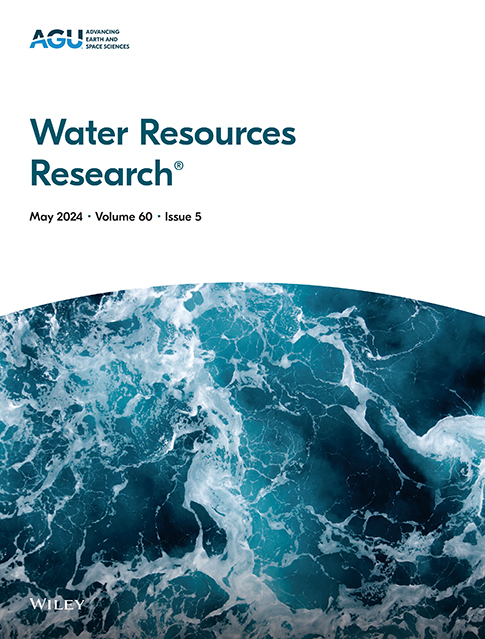Understanding Long-Term Streamflow Response to Snowfall Change: Insights From a Multivariate Analysis
IF 4.6
1区 地球科学
Q2 ENVIRONMENTAL SCIENCES
引用次数: 0
Abstract
Ongoing climate change is modifying snow dynamics, further altering streamflow (Q) in cold regions. Despite extensive research over the past decades, the impact of changes in snow on mean annual Q remains debated, and the underlying mechanisms driving these responses are still unclear. In this study, we employ the Budyko framework to establish multivariate relationships between a Budyko model parameter and several variables, including snowfall fraction (fs), across 931 carefully selected snow-influenced catchments in the Northern Hemisphere. Our results show that the average elasticity of Q to fs across all catchments is 0.13. However, mean annual Q responses vary among catchments, with 78% of catchments experiencing decreased Q and others exhibiting increased Q with declining fs. These variations are manifested in decreased warm-season Q and increased cold-season Q, respectively. Additionally, attribution analysis of Q change highlights a critical role of fs changes as a second-order control on Q after precipitation. Examining possible mechanisms behind the varying Q responses reveal that the influence of fs on snowmelt intensity and snow season available energy is more pronounced in catchments exhibiting positive Q feedback to fs. In contrast, its impact on rainfall intensity and the asynchrony between available energy and liquid water input is greater in catchments displaying negative Q feedback to fs. Our findings enhance the understanding of Q responses to changing fs and provide valuable insights for water resource management in snow-influenced regions in a warming climate.求助全文
约1分钟内获得全文
求助全文
来源期刊

Water Resources Research
环境科学-湖沼学
CiteScore
8.80
自引率
13.00%
发文量
599
审稿时长
3.5 months
期刊介绍:
Water Resources Research (WRR) is an interdisciplinary journal that focuses on hydrology and water resources. It publishes original research in the natural and social sciences of water. It emphasizes the role of water in the Earth system, including physical, chemical, biological, and ecological processes in water resources research and management, including social, policy, and public health implications. It encompasses observational, experimental, theoretical, analytical, numerical, and data-driven approaches that advance the science of water and its management. Submissions are evaluated for their novelty, accuracy, significance, and broader implications of the findings.
 求助内容:
求助内容: 应助结果提醒方式:
应助结果提醒方式:


